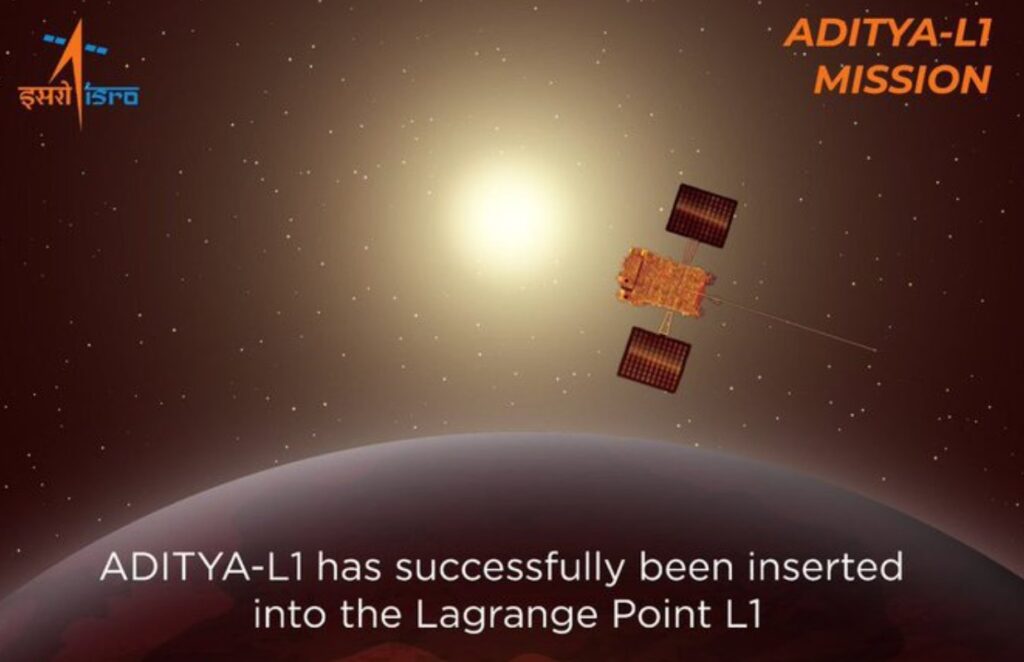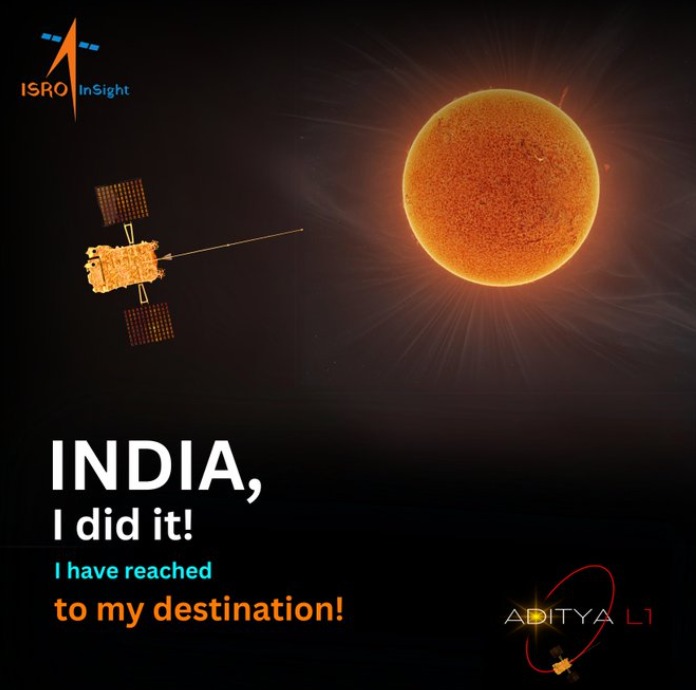
Aditya L1: Today, Aditya L1, the first solar mission of the Indian Space Research Organisation (ISRO), underwent its final manoeuvre to achieve its destination and was injected into its final orbit with success.
Aditya L1
‘Aditya-L1 is going to reach its L1 point on 6 January at 4pm and we are going to do the final manoeuvre to keep it there,’ Aditya L1 ISRO chief (S Somanath) told news agency ANI on Monday.
Since its September 2 launch last year, the spacecraft has successfully completed four earthbound manoeuvres and one Trans-Lagrangean Point 1 Insertion (TL1I) manoeuvre.
Roughly 1.5 million kilometres from Earth, the first Sun-Earth Lagrangian point (L1) is the mission’s focal point.
From there, “it will monitor the Sun’s corona and attempt to comprehend its exceptionally high temperature”.
A special place where the gravitational forces between the Earth and the Sun equalise is called the Lagrange Point. The influence of other celestial bodies, like the Moon, Mars, and Venus, prevents absolute neutralisation; however, the L1 point offers a stable position for observational purposes.
Aditya L1's Arrival at Lagrange Point 1:
On Saturday, Prime Minister Narendra Modi praised the nation on social media site X after Aditya L1 parked at Lagrange Point 1 to observe the sun.
According to ISRO experts, the main benefit of having a satellite in a halo orbit around the L1 point is being able to monitor the Sun continuously without any occultations or eclipses. This would also give the satellite a larger advantage in real-time observation of solar activity and their impact on space weather.
On September 2, 2023, the Aditya-L1 spacecraft was launched by a Polar Satellite Launch Vehicle (PSLV-C57) from the second launch pad of the Satish Dhawan Space Centre (SDSC), Sriharikota. Following a 63-minute and 20-second journey, the object was effectively launched into an elliptical orbit encompassing 235×19500 km around the Earth. After leaving Earth’s zone of influence, the spacecraft made a number of manoeuvres and moved towards Sun-Earth L1.
The spacecraft is equipped with seven payloads that use electromagnetic, particle, and magnetic field detectors to study the photosphere, chromosphere, and the outermost layers of the Sun, or the corona. The space agency states that four payloads use the unique vantage point L1 to observe the Sun directly, while the other three payloads conduct in-situ studies of particles and fields at the Lagrange point L1, offering significant scientific studies of the propagatory effect of solar dynamics in the interplanetary medium.




